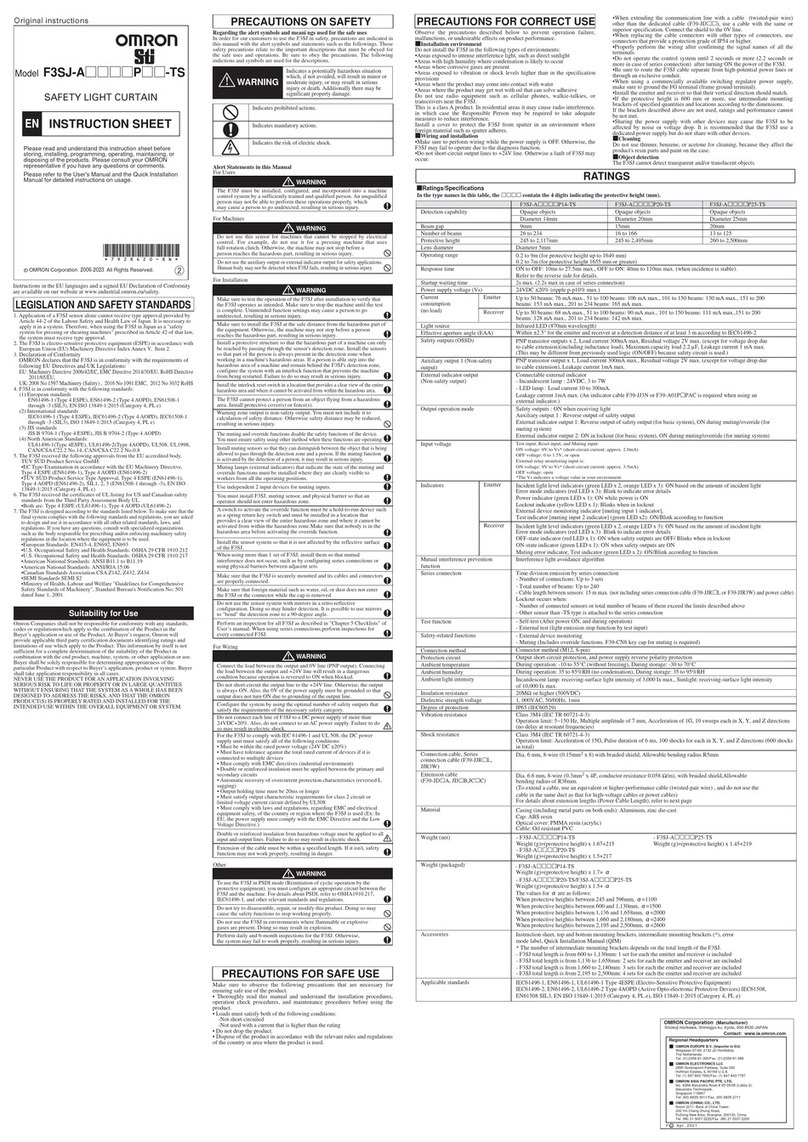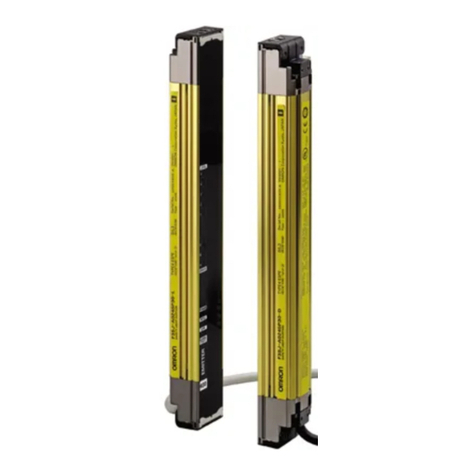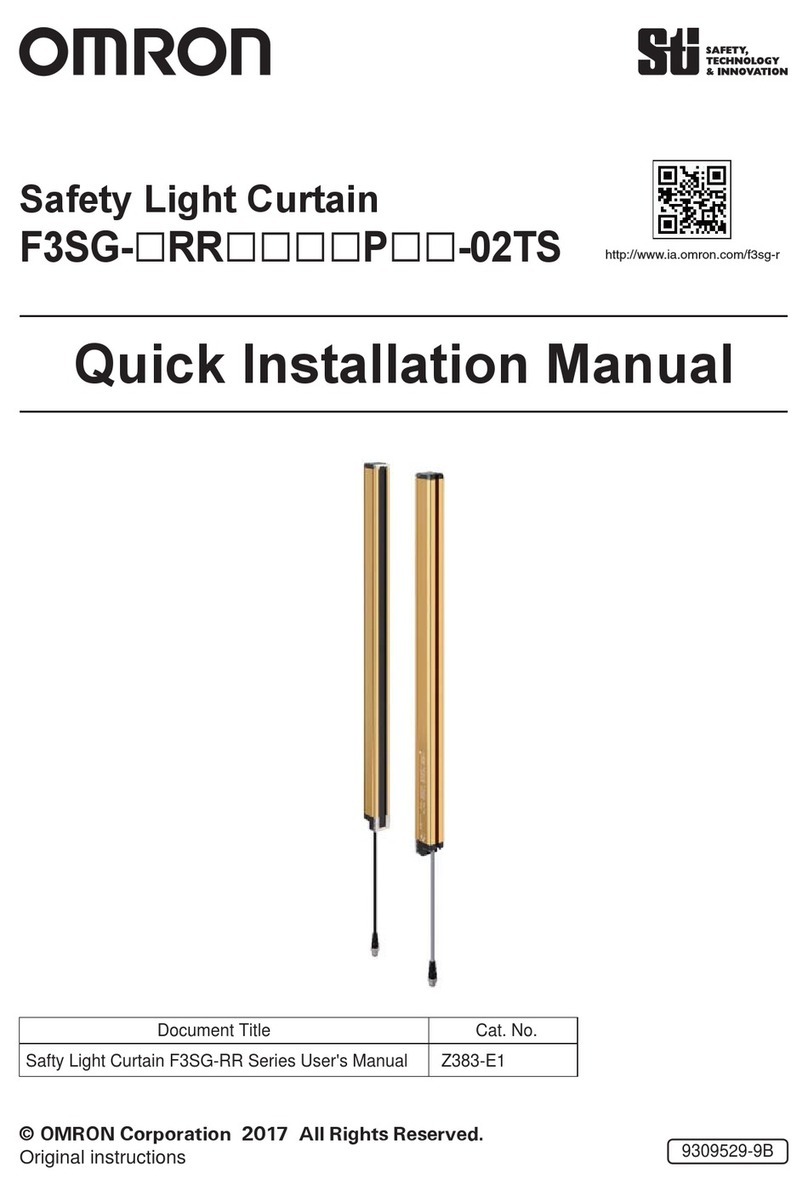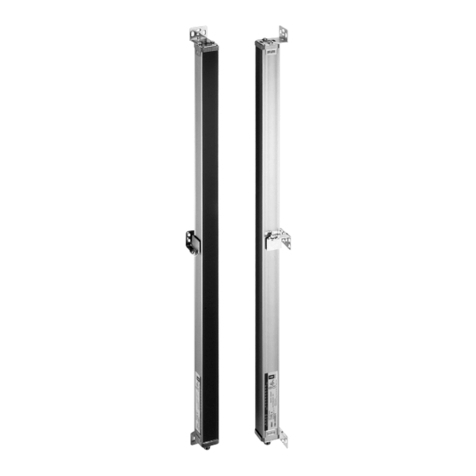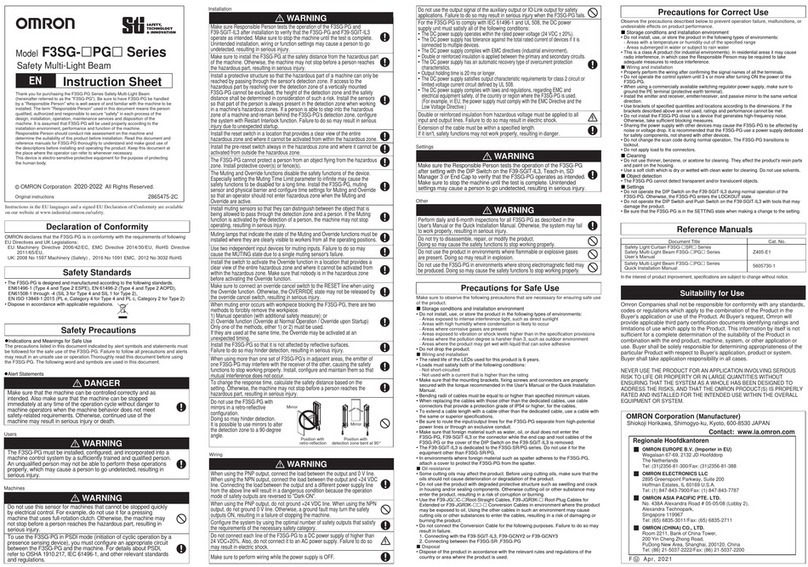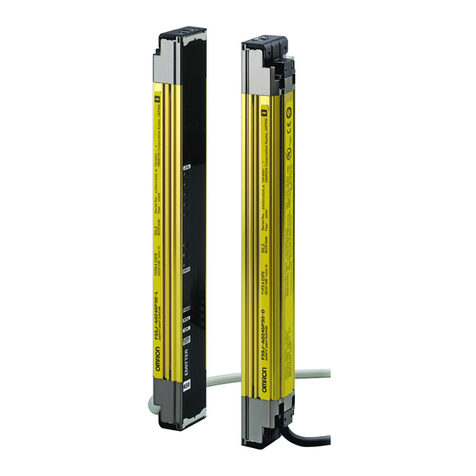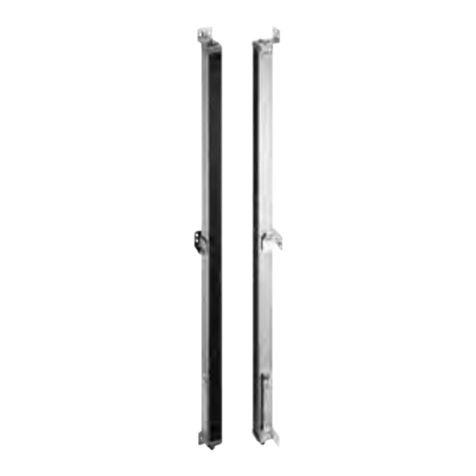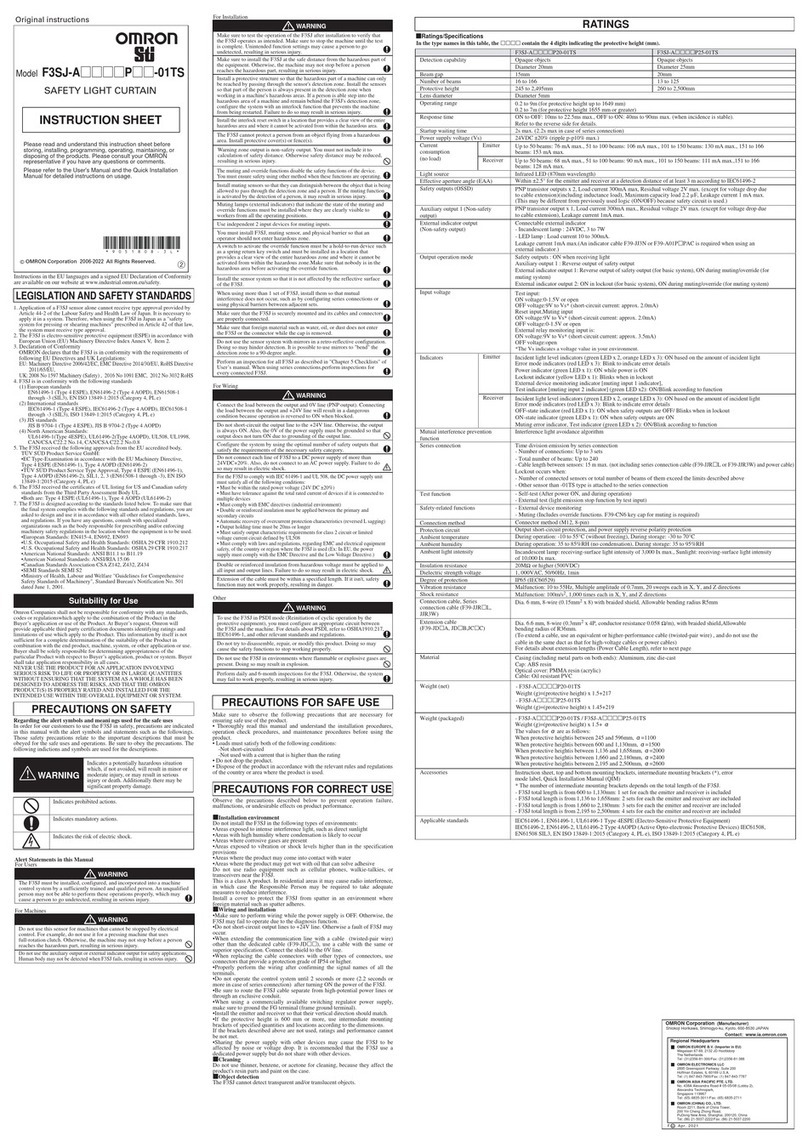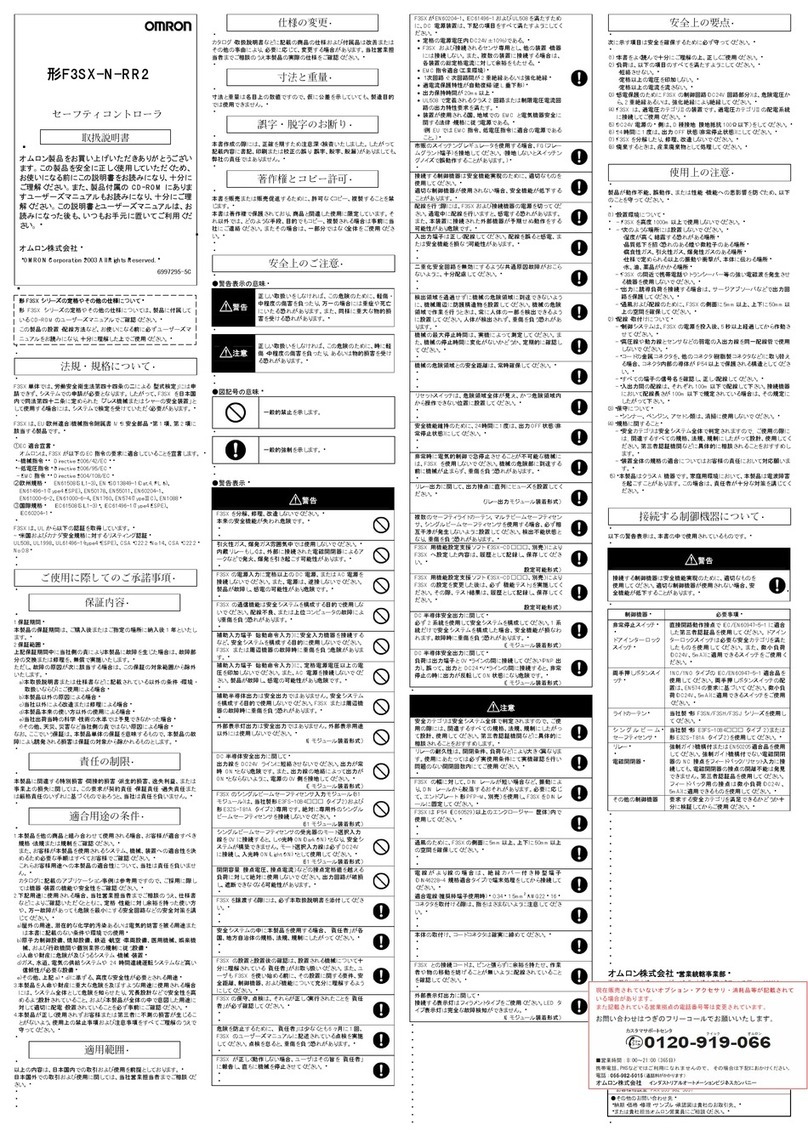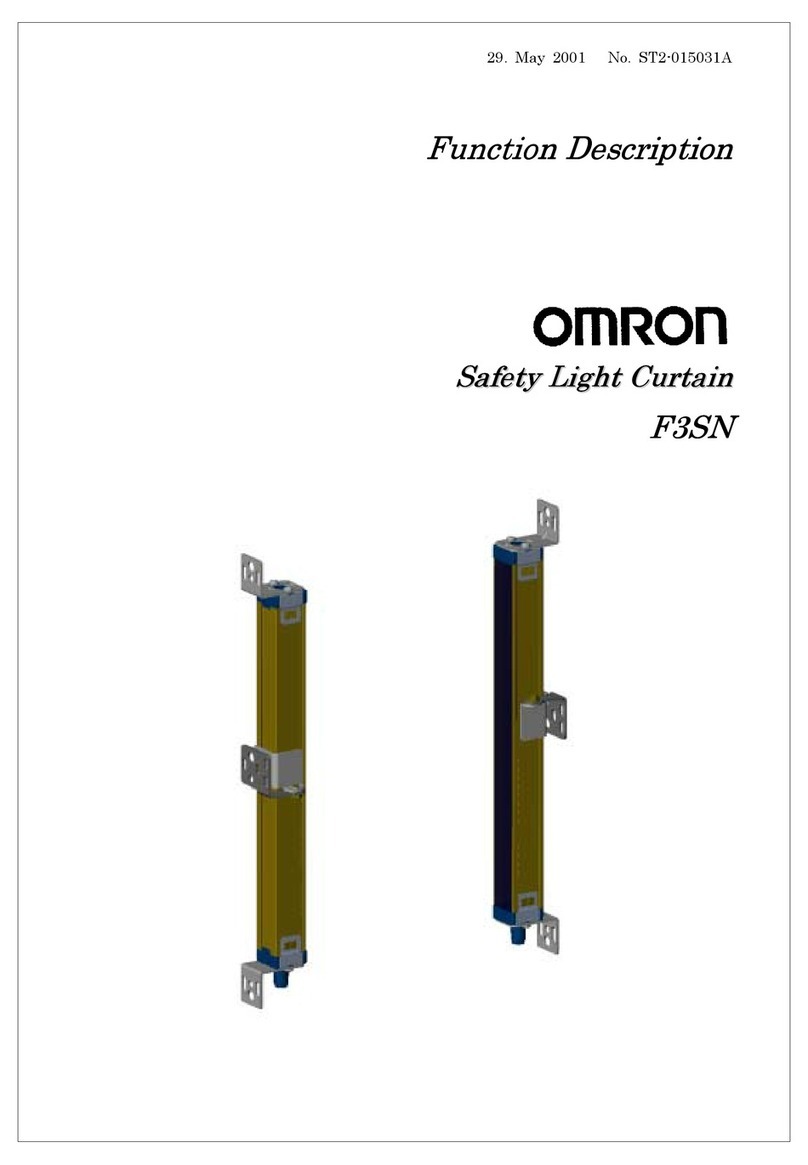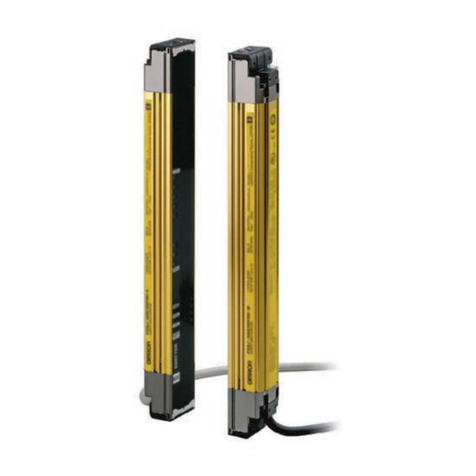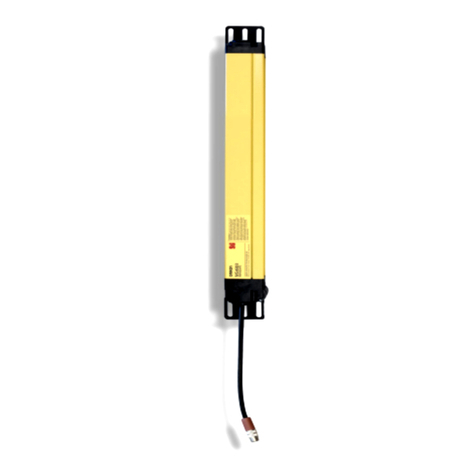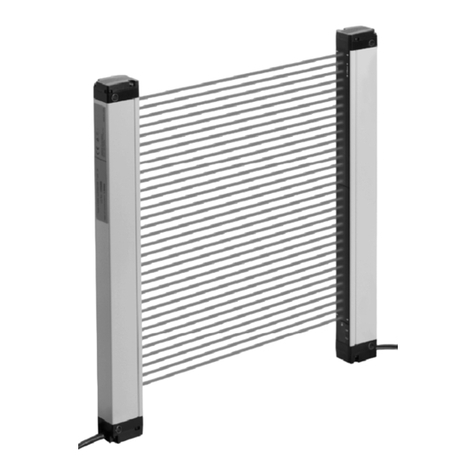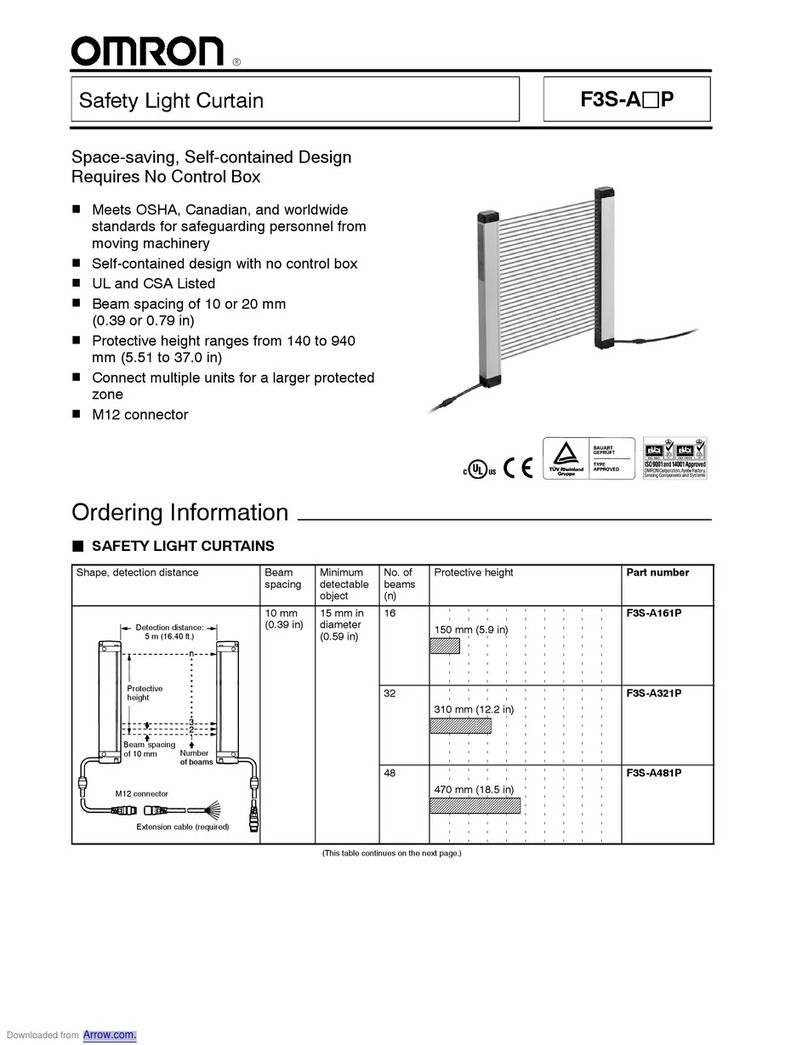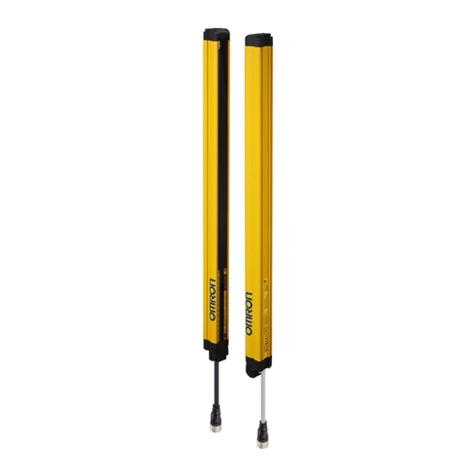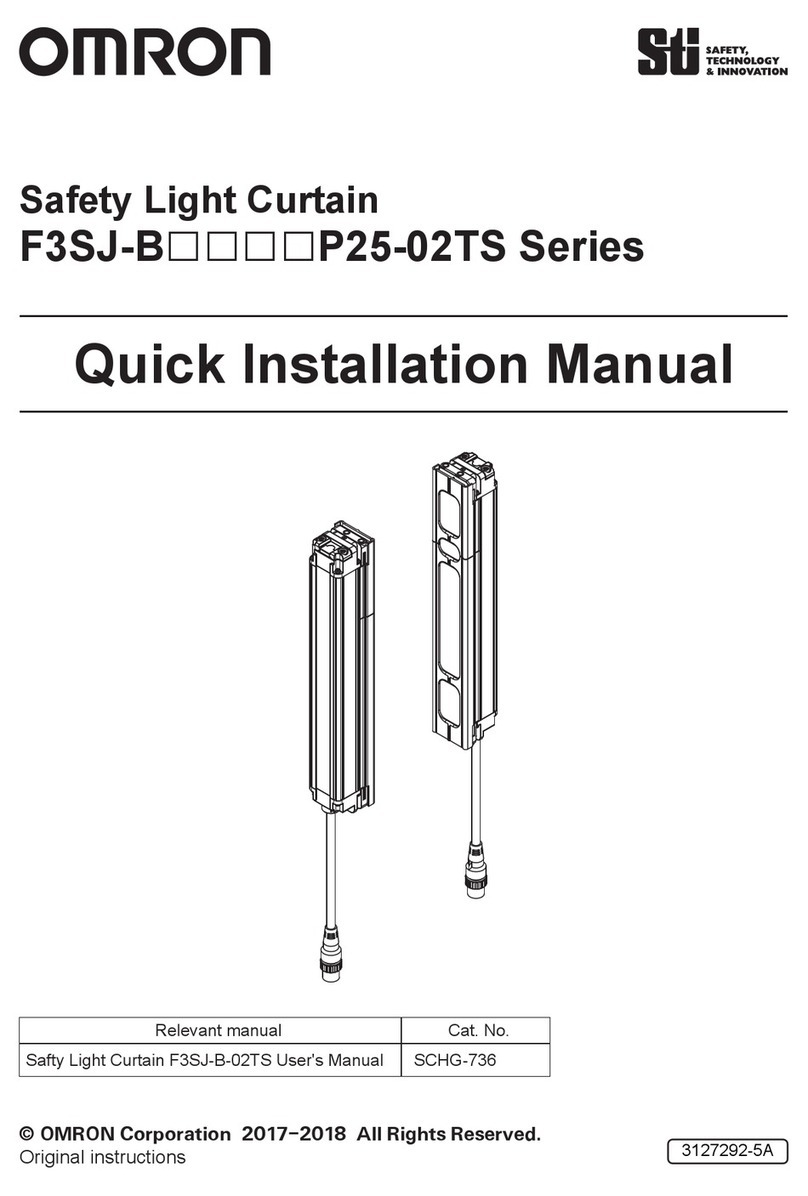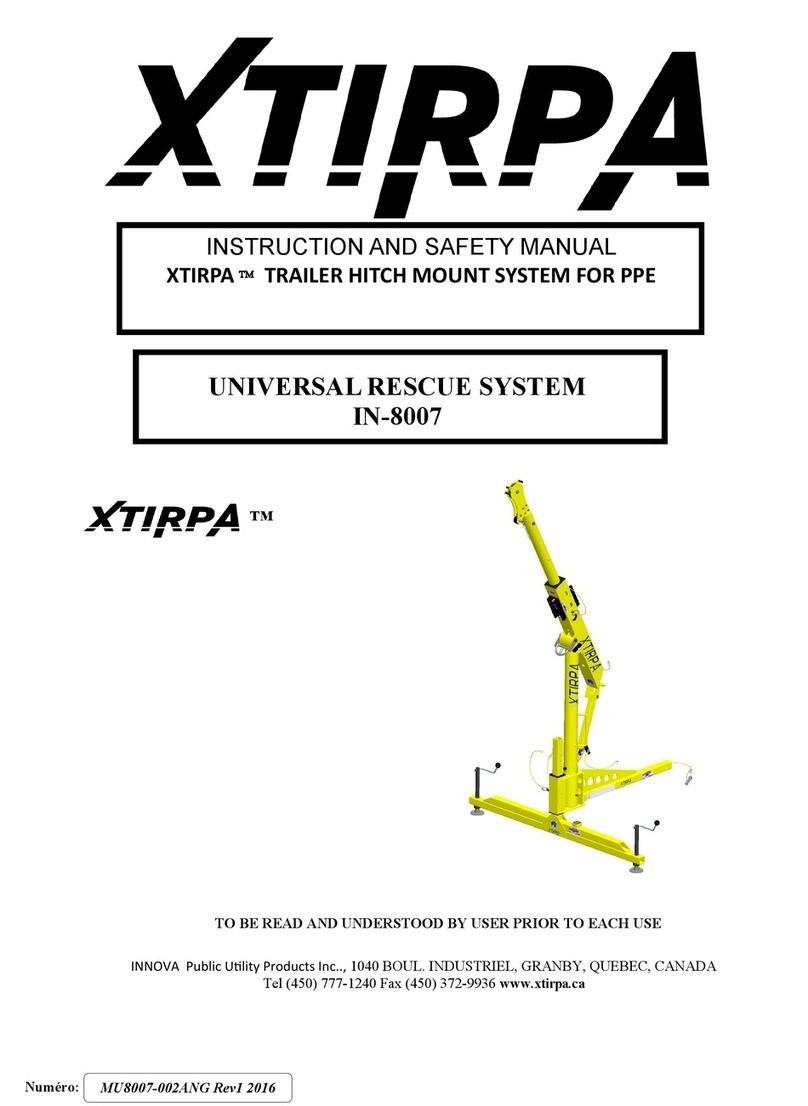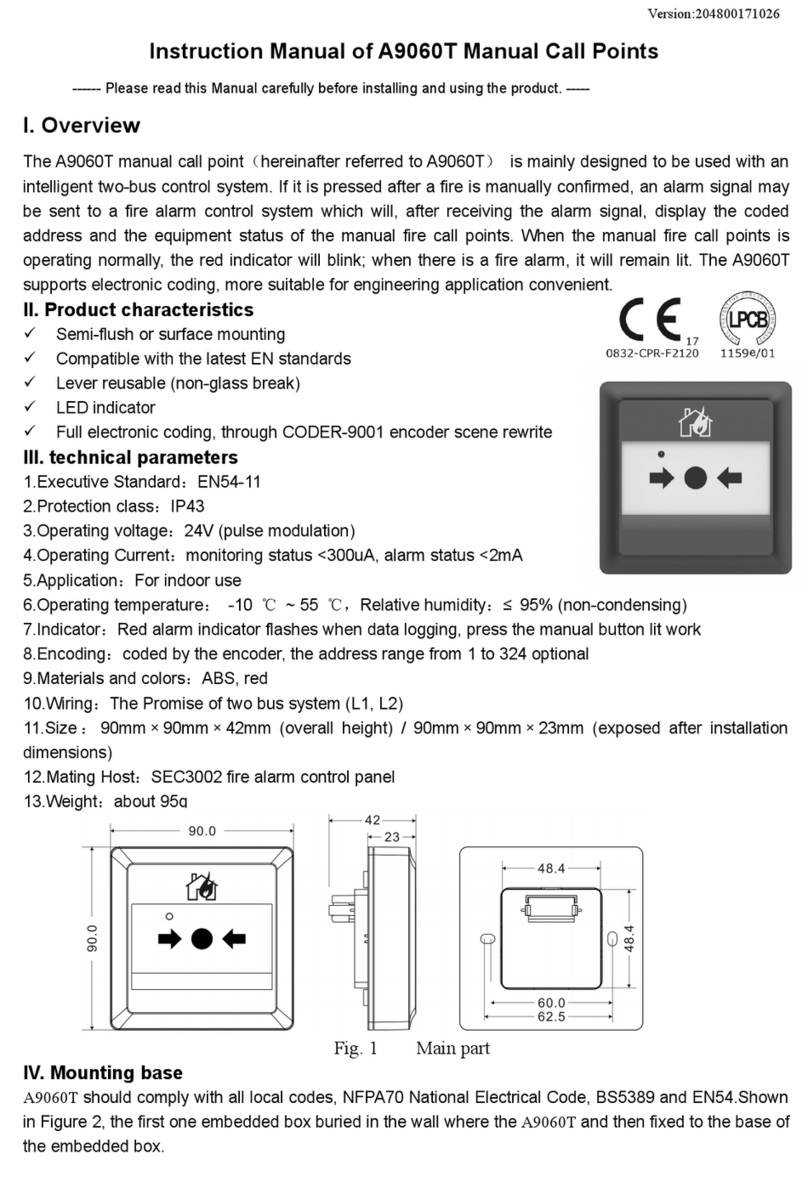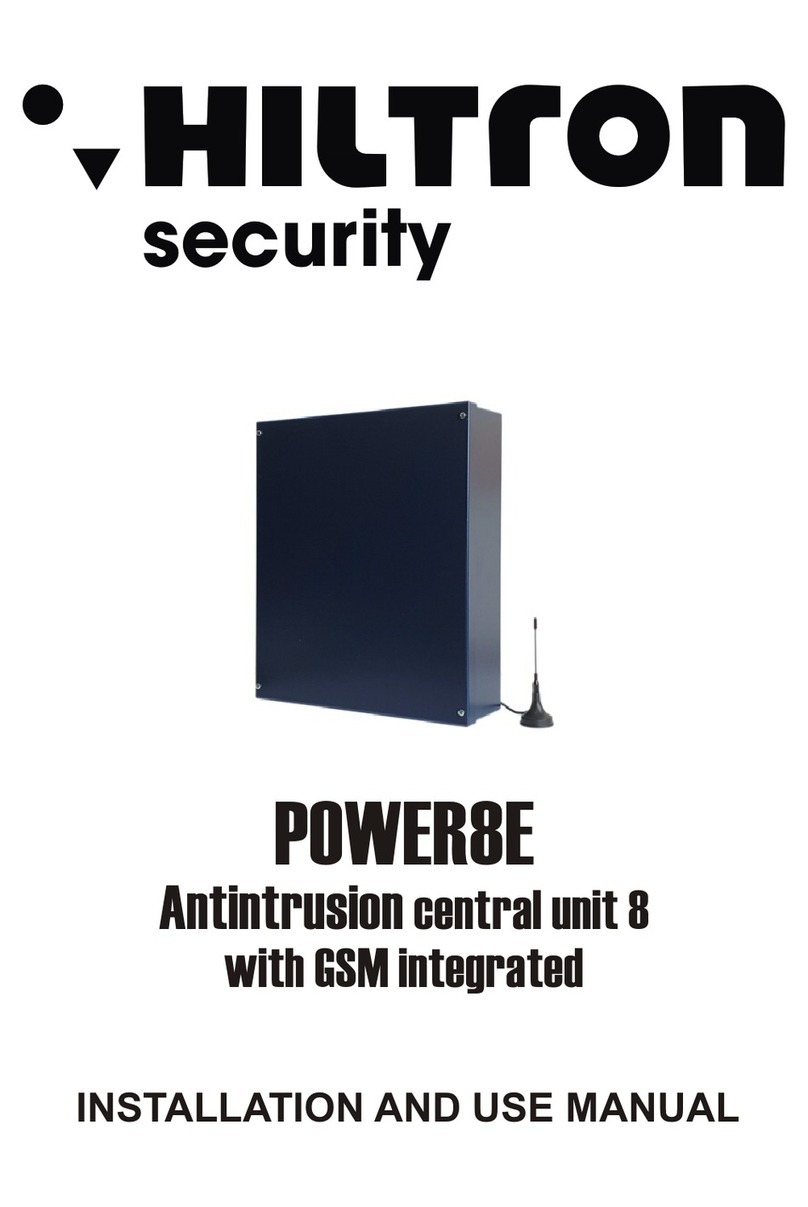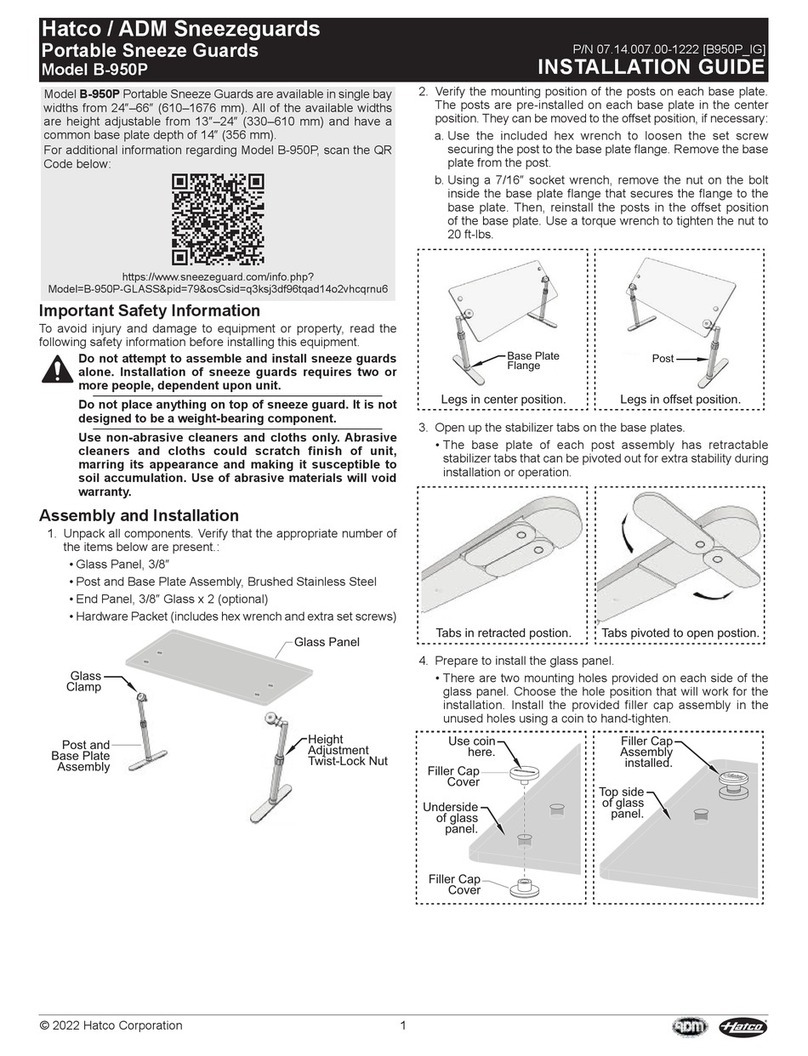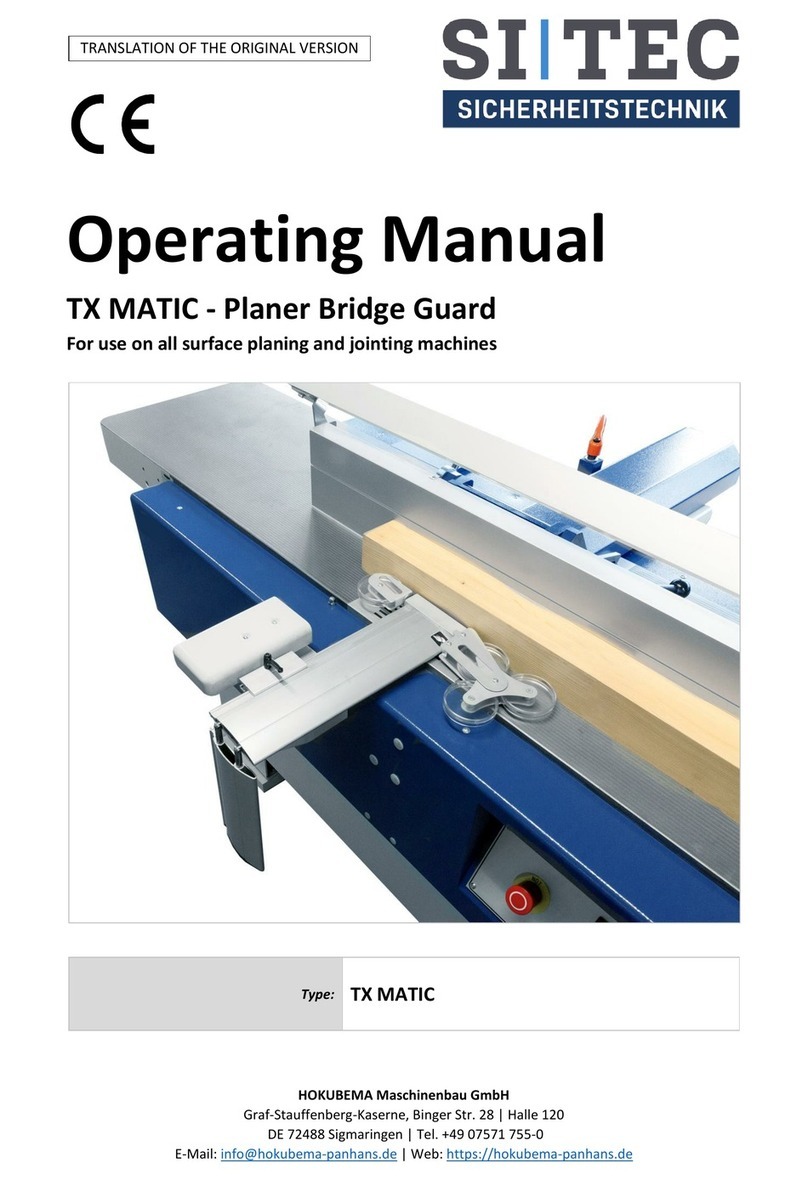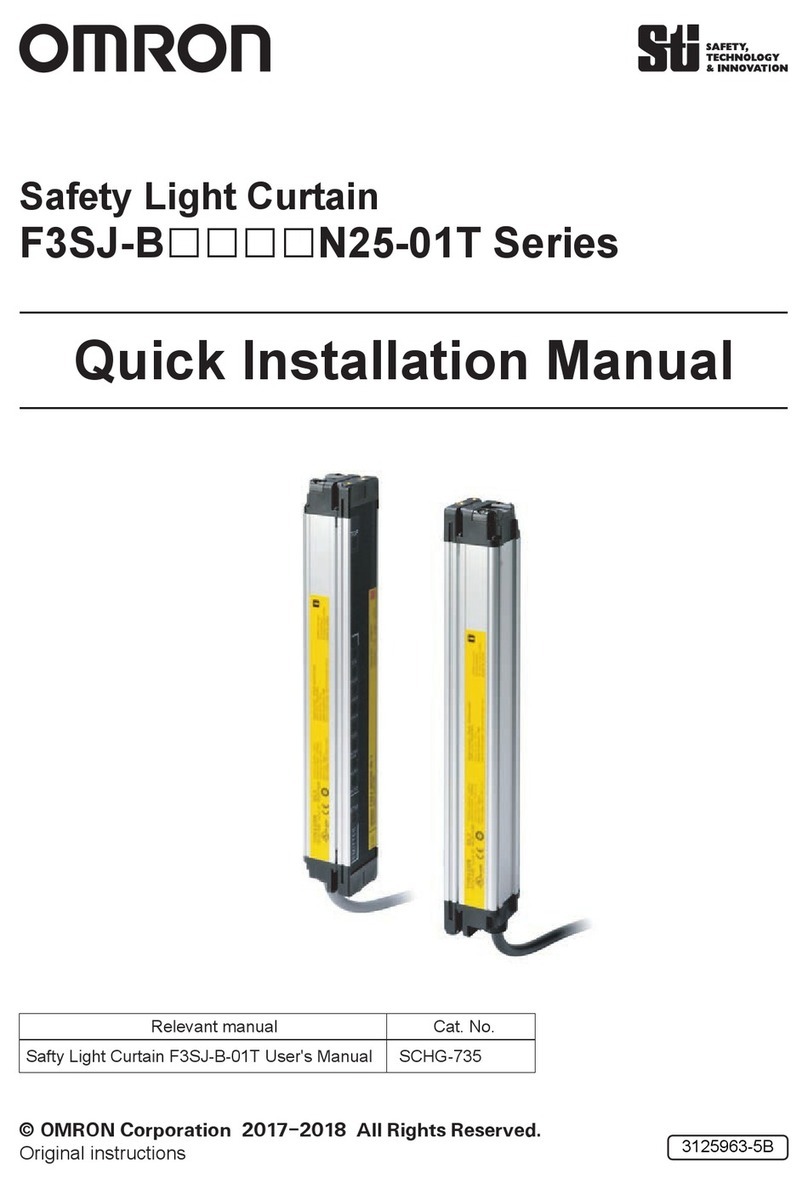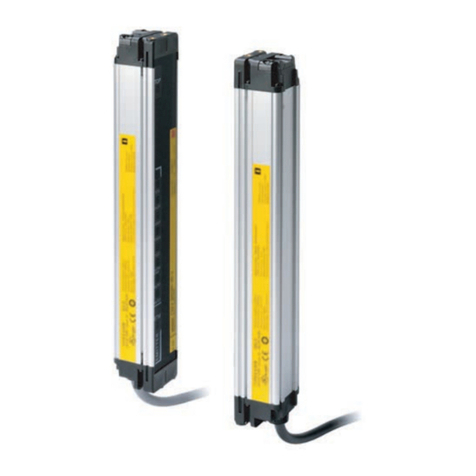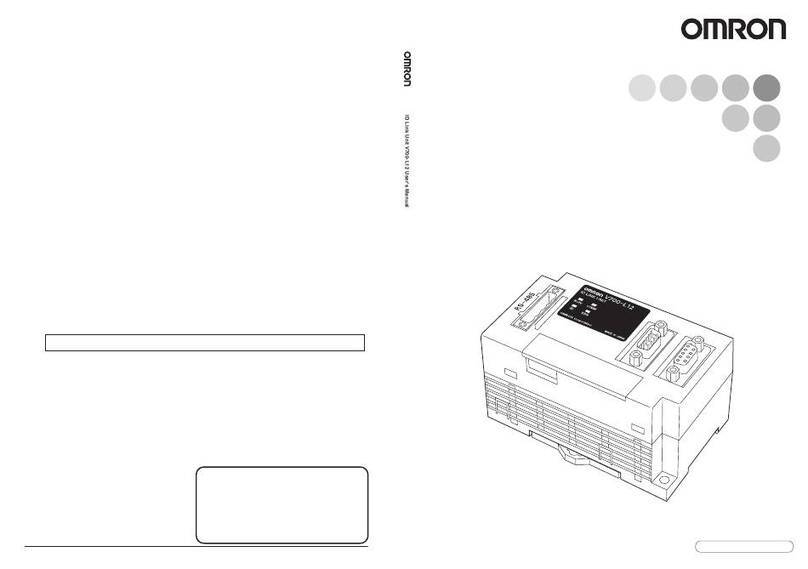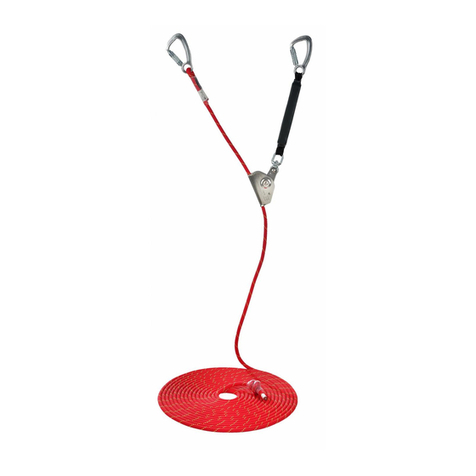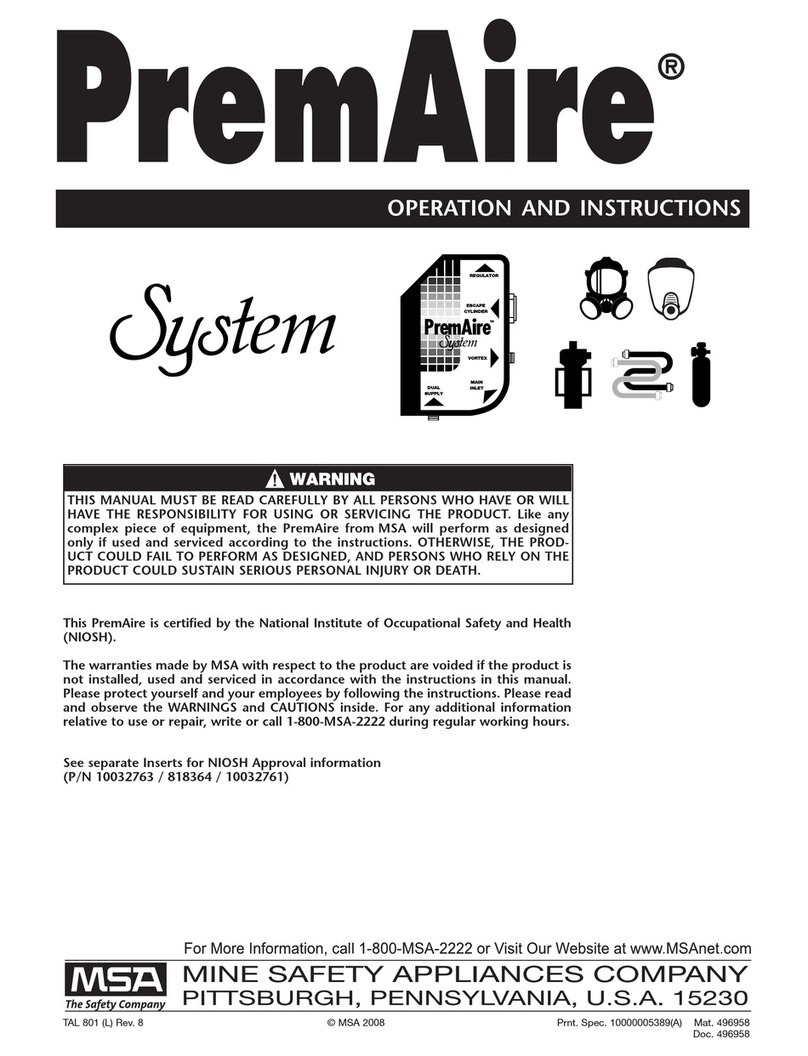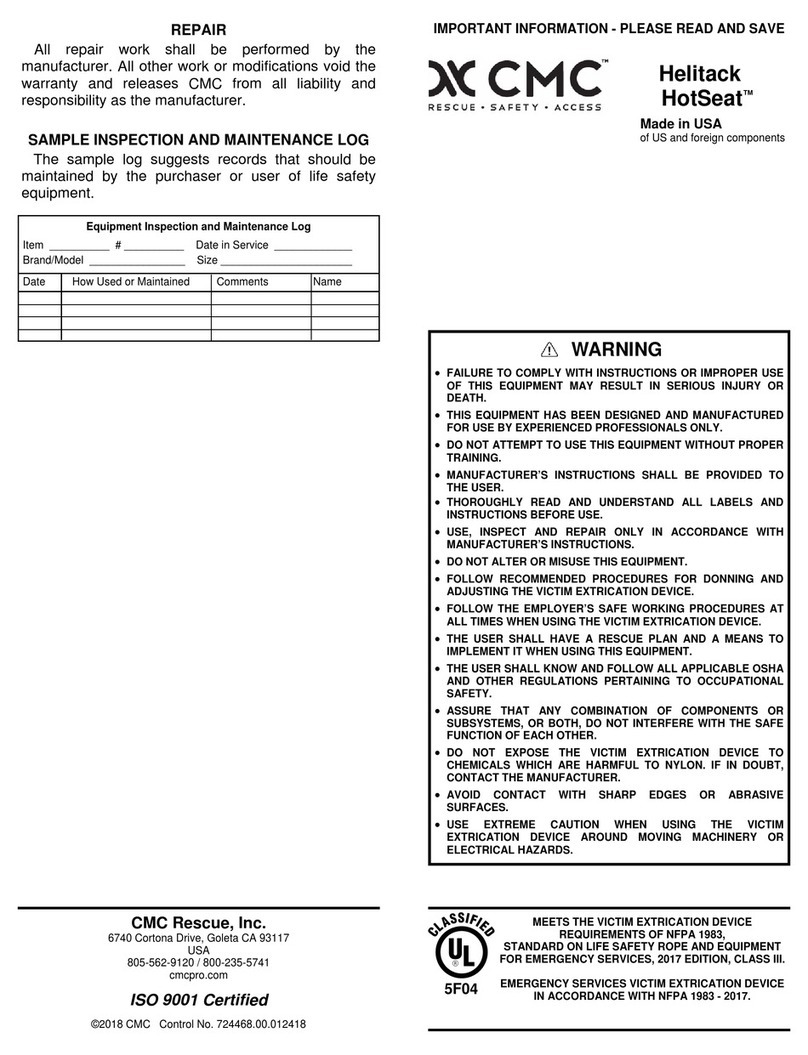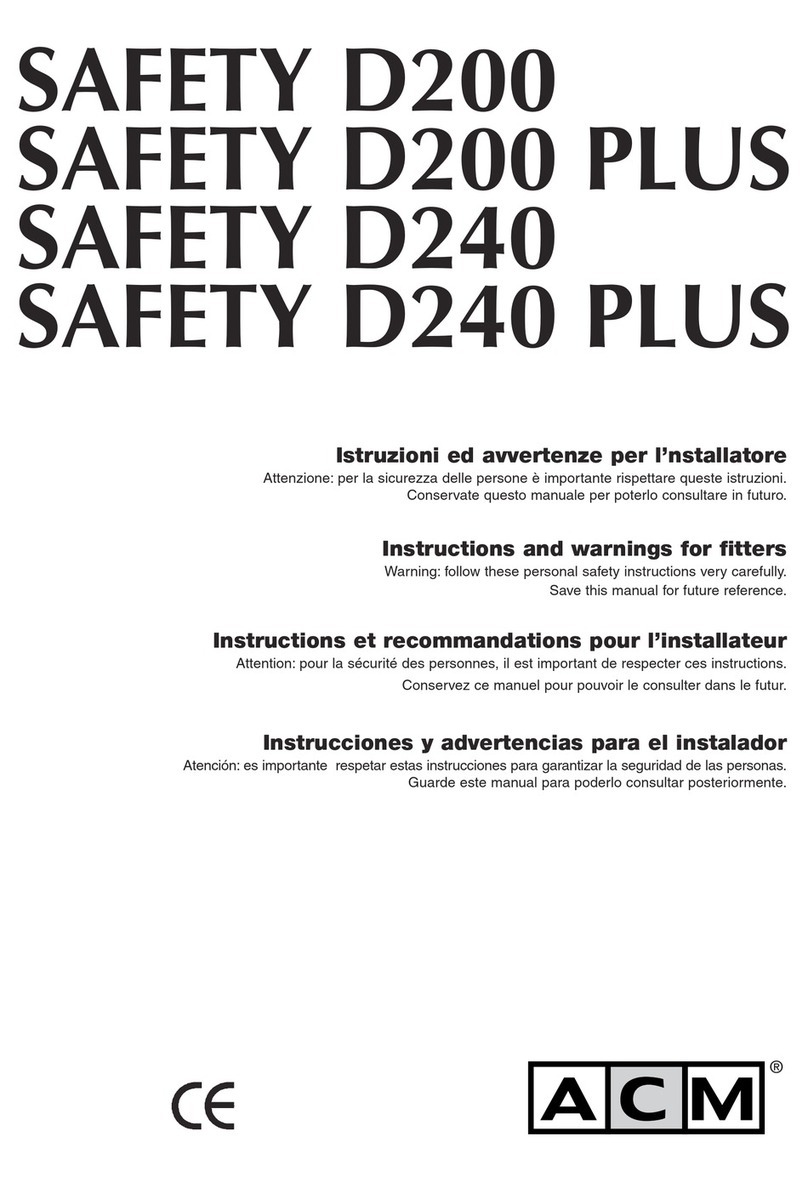
ModelF3SJ-B□□□□P25-02TS
1. An F3SJ-B does not receive type approval provided by Article 44-2 of the
Labour Safety and Health Law of Japan. Therefore, the F3SJ-B cannot be
used as a "safety system for pressing or shearing machines" prescribed in
Article 42 of that law.
2. The F3SJ-B is electro-sensitive protective equipment (ESPE) in accordance
with European Union (EU) Machinery Directive Index Annex V, Item 2.
3. The F3SJ-B is in conformity with the following standards:
(1) European standards
EN 61496-1 (Type 4 ESPE), EN 61496-2 (Type 4 AOPD),
EN 61508-1 through -3 (SIL3), EN 61000-6-4,
EN ISO 13849-1:2015 (Category 4, PL e)
(2) International standards
IEC 61496-1 (Type 4 ESPE), IEC 61496-2 (Type 4 AOPD),
IEC 61508-1 through -3 (SIL3), ISO 13849-1:2015 (Category 4, PLe)
(3) JIS standards
JIS B 9704-1 (Type 4 ESPE), JIS B 9704-2 (Type 4 AOPD)
(4) North American Standards:
UL 61496-1 (Type 4 ESPE), UL 61496-2 (Type 4 AOPD), UL 508,
UL 1998, CAN/CSAC22.2 No.14, CAN/CSA C22.2 No.08
4. The F3SJ-B received the approvals of EC Type-Examination in accordance
with the EU Machinery Directive, Type 4 ESPE and Type 4 AOPD from
the EU accredited body, TÜV SÜD Product Service GmbH.
5. The F3SJ-B received the certificates of UL listing for US and Canadian
safety standards, Type 4 ESPE and Type 4 AOPD from the Third Party
Assessment Body UL.
6. The F3SJ-B is designed according to the standards listed below. To make
sure that the final system complies with the following standards and
regulations, you are asked to design and use it in accordance with all other
related standards, laws, and regulations. If you have any questions, consult
with specialized organizations such as the body responsible for prescribing
and/or enforcing machinery safety regulations in the location where the
equipment is to be used.
•European Standards: EN415-4, EN692, EN693
•U.S. Occupational Safety and Health Standards: OSHA 29 CFR 1910.212
•U.S. Occupational Safety and Health Standards: OSHA 29 CFR 1910.217
•American National Standards: ANSI B11.1 to B11.19
•American National Standards: ANSI/RIA 15.06
•Canadian Standards Association CSA Z142, Z432, Z434
•SEMI Standards SEMI S2
•Japan Ministry of Health, Labour and Welfare "Guidelines for
Comprehensive Safety Standards of Machinery", Standard Bureau's
Notification No. 0731001 dated July 31, 2007.
©OMRON Corporation
2011-2022
All Rights Reserved.
Declaration of Conformity
Suitability for Use
Please read and understand this instruction sheet before
storing, installing, programming, operating, maintaining, or
disposing of the products. Please consult your OMRON
representative if you have any questions or comments.
Please refer to the User's Manual and the Quick Installation
Manual for detailed instructions on usage.
Observe the precautions described below to prevent operation failure, malfunctions, or undesirable effects on product performance.
■Storage conditions and installation environment
• Do not install, use, or store the F3SJ-B for a long time at a temperature or humidity out of the specified range.
• This is a class A product. In residential areas it may cause radio interference, in which case the Responsible Person may be required to take adequate measures to
reduce interference.
• Do not use radio equipment such as cellular phones, walkie-talkies, or transceivers near the F3SJ-B.
• Do not use F3SJ-B at altitudes over 1,000 meters.
■Wiring and installation
• Make sure to perform wiring while the power supply is OFF. Otherwise, the F3SJ-B may fail to operate due to the diagnosis function.
• Do not short-circuit output lines to +24 V line. Otherwise a fault of the F3SJ-B may occur.
• When extending the communication line with a cable (twisted-pair wire) other than the dedicated cable (F39-JD□□), use a cable with the same or superior
specifications. Connect the shield to the 0V line.
• Be sure that there is nothing in the detection zone and the stable-state indicator is turned ON after power is turned ON.
• Properly perform the wiring after confirming the signal names of all the terminals.
• Do not operate the control system until 2 seconds or more after turning ON the power of the F3SJ-B.
• Be sure to route the F3SJ-B cable separate from high-potential power lines or through an exclusive conduit.
• When using a commercially available switching regulator power supply, make sure to ground the FG terminal (frame ground terminal).
•
If the protective height is more than 545 mm, use Intermediate Brackets of specified quantities and locations according to the dimensions described in the User's Manual.
• Do not install the F3SJ-B close to a device that generates high-frequency noise. Otherwise, take sufficient blocking measures.
• Sharing the power supply with other devices may cause the F3SJ-E/B to be affected by noise or voltage drop. It is recommended that the F3SJ-E/B use a dedicated
power supply but do not share with other devices.
■Cleaning
Do not use thinner, benzene, or acetone for cleaning, because they affect the product's resin parts and paint on the extrusion.
■Object detection
The F3SJ-B cannot detect transparent and/or translucent objects.
PRECAUTIONS FOR CORRECT USE
Internal Indicator
Input/Output Circuit
Original instructions
Not used
1
−
−
ON
Blinking
ON
Blinking
ON
Blinking
ON
Blinking
Blinking
Blinking
ON
ON
ON
Blinking
Blinking
Blinking
ON
Blinking
ON
Blinking
ON
Blinking
ON
Blinking
Turns ON when incidence level is
170% or more of the output ON
threshold.
Blinks when the safety output is
turned OFF due to disturbance
light or vibration.
Green: Output ON, Red: Output OFF
Output related error
During lockout
During lockout, error occurrence side
When power is ON
Error due to power supply voltage/noise
During emission stoppage
Muting error
Muting input 1 is ON
Muting input 2 is ON
When communication between
emitter and receiver is established.
Communication error
Model configuration of the connected
sensor is in error
Internal error
External device monitoring input is ON
External device monitoring error
Top beam is receiving light
During muting/override Cap
disconnection error sensor connection
error
Bottom beam is receiving light
During muting/override
ON/
Blinking Description
2
3
4
5
6
7
8
9
10
11
12
13
14
15
Stable-state
indicator
ON/OFF
output-state
indicator
Lockout
indicator
Power
indicator
Test indicator
Muting error
indicator
Muting input 1
indicator
Muting input 2
indicator
Communication
indicator
Configuration
indicator
Internal error
indicator
External device
monitoring
indicator
Top-beam-state
indicator
Bottom-
beam-state
indicator
STB
ON/OFF
LOCKOUT
POWER
TEST
MUTING
ERROR
MUTE1
MUTE2
COM
CFG
INTERNAL
INTERLOCK
EDM
TOP
BTM
Omron Companies shall not be responsible for conformity with any
standards, codes or regulations which apply to the combination of the Product
in the Buyer’s application or use of the Product.At Buyer’s request, Omron
will provide applicable third party certification documents identifying ratings
and limitations of use which apply to the Product. This information by itself
is not sufficient for a complete determination of the suitability of the Product
in combination with the end product, machine, system, or other application or
use. Buyer shall be solely responsible for determining appropriateness of the
particular Product with respect to Buyer’s application, product or system.
Buyer shall take application responsibility in all cases.
NEVER USE THE PRODUCT FORAN APPLICATION INVOLVING
SERIOUS RISK TO LIFE OR PROPERTY OR IN LARGE QUANTITIES
WITHOUT ENSURING THAT THE SYSTEM ASAWHOLE HAS BEEN
DESIGNED TOADDRESS THE RISKS, AND THAT THE OMRON
PRODUCT(S) IS PROPERLY RATED AND INSTALLED FOR THE
INTENDED USE WITHIN THE OVERALLEQUIPMENT OR SYSTEM.
Alert Statements in this Manual
Meanings of Alert Symbols
Regarding the alert symbols and meanings used for the safe uses
In order to use the F3SJ-B safely, the precautions listed in this Instruction
Sheet indicated by alert symbols and descriptions must be followed. Failure
to follow all precautions and alerts may result in an unsafe use or operation.
The following indications and symbols are used for the descriptions.
The F3SJ-B must be installed, configured, and incorporated into a machine
control system by a sufficiently trained and qualified person. An
unqualified person may not be able to perform these operations properly,
which may cause a person to go undetected, resulting in serious injury.
Thoroughly read this manual and understand the installation procedures,
operation check procedures, and maintenance procedures before using
the product.
Do not use this sensor for machines that cannot be stopped by electrical
control. For example, do not use it for a pressing machine that uses
full-rotation clutch. Otherwise, the machine may not stop before
a personreaches the hazardous part, resulting in serious injury.
PRECAUTIONS ON SAFETY
Indicates a potentially hazardous situation
which, if not avoided, will result in minor or
moderate injury, or may result in serious
injury or death. Additionally there may be
significant property damage.
WARNING
WARNING
WARNING
For Users
For Machines
Indicates prohibited actions.
Indicates mandatory actions.
Indicates the risk of electric shock.
Make sure to test the operation of the F3SJ-B after installation to verify
that the F3SJ-B operates as intended. Make sure to stop the machine until
the test is complete. Unintended function settings may cause a person
to go undetected, resulting in serious injury.
Install a protective structure so that the hazardous part of a machine can only
be reached by a person that passes through the sensor's detection zone. Install
the sensors so that part of the person is always present in the detection zone
when working in a machine's hazardous zones, eliminating areas where the
sensors do not reach. If a person is able step into the hazardous zone of a
machine and remain behind the F3SJ-B's detection zone, configure the
system with an interlock function that prevents the machine from being
restarted. Failure to do so may result in serious injury.
Make sure to install the F3SJ-B at the safe distance from the hazardous
part of the equipment. Otherwise, the machine may not stop before
a person reaches the hazardous part, resulting in serious injury.
Install the interlock reset switch in a location that provides a clear view
of the entire hazardous zone and where it cannot be activated from
within the hazardous zone.
The F3SJ-B cannot protect a person from a projectile exiting the
hazardous zone. Install protective cover(s) or fence(s).
Install the F3SJ-B so that it is not affected by a reflective surface.
Failure to do so may hinder detection, resulting in serious injury.
When using more than one set of F3SJ-Bs, install them so that mutual
interference does not occur, such as by configuring series connections
or using physical barriers between adjacent sets.
Make sure that the F3SJ-B is securely mounted and its cables
and connectors are properly secured.
Do not use the sensor system with mirrors in a retro-reflective
configuration as shown below. Doing so may hinder detection. It is
possible to use mirrors to "bend" the detection zone to a 90-degree angle.
Connect the load between the output and 0V line (PNP output). Connecting
the load between the output and +24 V line will result in a dangerous
condition because operation is reversed to "ON when blocked".
Do not short-circuit the output line to the +24 V line. Otherwise, the output
is always ON. Also, the 0 V of the power supply must be grounded so
that output does not turn ON due to grounding of the output line.
Configure the system by using the optimal number of safety outputs
that satisfy the requirements of the necessary safety category.
Make sure to perform wiring while the power supply is OFF.
Do not connect each line of F3SJ-B to a DC power supply of more than
24 VDC+20%.Also, do not connect to an AC power supply. Failure to
do so may result in electric shock or breakdown of the device.
Do not use the auxiliary output for safety applications.A person may go
undetected even if F3SJ-B is out of order, resulting in serious injury.
Double or reinforced insulation from hazardous voltage must be applied
to all input and output lines. Failure to do so may result in electric shock.
Do not try to disassemble, repair, or modify this product. Doing so
may cause the safety functions to stop working properly.
Do not use the F3SJ-B in environments where flammable or
explosive gases are present. Doing so may result in explosion.
Perform daily and 6-month inspections for the F3SJ-B. Otherwise,
the system may fail to work properly, resulting in serious injury.
Do not use radio equipment such as cellular phones, walkie-talkies,
or transceivers near the F3SJ-B.
Extension of the cable must be within a specified length. If it isn't,
safety function may not work properly, resulting in danger.
To use the F3SJ-B in PSDI mode (Reinitiation of cyclic operation by
the protective equipment), you must configure an appropriate circuit
between the F3SJ-B and the machine. For details about PSDI, refer
to OSHA1910.217, IEC61496-1, and other relevant standards
and regulations.
For the F3SJ-B to comply with IEC61496-1 and UL508, the DC power
supply unit must satisfy all of the following conditions:
• Must be within the rated power voltage (24 V DC ± 20%)
• Must have tolerance against the total rated current of devices if it is
connected to multiple devices
• Must comply with EMC directives (industrial environment)
• Double or reinforced insulation must be applied between the primary
and secondary circuits
• Automatic recovery of overcurrent protection characteristics
• Output holding time must be 20ms or longer
• Must satisfy output characteristic requirements for class 2 circuit or
limited voltage current circuit defined by UL508
• Must comply with laws and regulations, regarding EMC and electrical
equipment safety, of the country or region where the F3SJ-B is used
(Ex: In EU, the power supply must comply with the EMC Directive
and the Low Voltage Directive.)
Perform an inspection for all F3SJ-B as described in
"Chapter 5 Checklists" in the User's Manual.
WARNING
WARNING
WARNING
For Installation
For Wiring
Other
Reflector
Position with retro-reflection Position with detection zone
bent at 90°
Reflector
Install muting sensors so that they can distinguish between the object that
is being allowed to be passed through the detection zone and a person. If
the muting function is activated by the detection of a person, it may
result in serious injury.
Use two independent input devices for muting inputs.
The muting and override functions disable the safety functions of the
device.You must ensure safety using other method when these functions
are operating.A switch to activate the override function must be a
hold-to-run device such as a spring return key switch and must be
installed in a location that provides a clear view of the entire hazardous
zone and where it cannot be activated from within the hazardous
zone.Make sure that nobody is in the hazardous zone before activating
the override function.
Make sure to observe the following precautions that are necessary for
ensuring safe use of the product.
• Do not install the F3SJ-B in the following types of environments:
-Areas exposed to intense interference light, such as direct sunlight
-Areas with high humidity where condensation is likely to occur
-Areas where oil mist or corrosive gases are present
-Areas exposed to vibration or shock levels higher than in the specification
provisions
-Areas where the product may come into contact with water
-Areas with pollution degree 3
-Areas where the product may get wet with oil that can solve adhesive
• Loads must satisfy both of the following conditions:
-Not short-circuited
-Not used with a current that is higher than the rating
• Do not drop the product.
• Install the emitter and receiver to the same vertical direction.
• Dispose of the product in accordance with the relevant rules and regulations
of the country or area where the product is used.
• Make sure to tighten the connectors of the cables securely.
• When replacing the cable connectors with other types of connectors, use
connectors that provide a protection grade of IP54 or higher.
• Be sure to route the input/output lines for the F3SJ-B separate from
high-potential power lines or through an exclusive conduit.
• To extend a cable length with a cable other than the dedicated cable, use
cable with the same or superior specifications.
• The cable extension length must be within the specified length (30 m max).
• PC Setting Support Software "SD Manager" (F39-GWUM) and Setting
Console (F39-MC21) are available only for F3SJ-A series. Do not use these
F3SJ-B series.
• Do not apply excessive force to the cover. Do not keep using the product
with the cover displaced, and do not remove the cover.
• The product may be affected depending on the type of the cutting oil. Be
sure to perform checking before using it.
PRECAUTIONS FOR SAFE USE
OMRON Corporation (Manufacturer)
Contact: www.ia.omron.com
Regional Headquarters
Shiokoji Horikawa, Shimogyo-ku, Kyoto, 600-8530 JAPAN
OMRON EUROPE B.V. (Importer in EU)
Wegalaan 67-69, 2132 JD Hoofddorp
The Netherlands
Tel: (31)2356-81-300/Fax: (31)2356-81-388
OMRON ELECTRONICS LLC
2895 Greenspoint Parkway, Suite 200
Hoffman Estates, IL 60169 U.S.A.
Tel: (1) 847-843-7900/Fax: (1) 847-843-7787
OMRON ASIA PACIFIC PTE. LTD.
No. 438A Alexandra Road # 05-05/08 (Lobby 2),
Alexandra Technopark,
Singapore 119967
Tel: (65) 6835-3011/Fax: (65) 6835-2711
OMRON (CHINA) CO., LTD.
Room 2211, Bank of China Tower,
200 Yin Cheng Zhong Road,
PuDong New Area, Shanghai, 200120, China
Tel: (86) 21-5037-2222/Fax: (86) 21-5037-2200
Apr, 2021
u
F
Emitter
Main
Circuit
Test Input Circuit
Interlock
Select Input Circuit
Reset Input Circuit
Indication
Receiver
Main
Circuit 2
External Device
Monitoring Input
Circuit
Indication
Receiver
Main
Circuit 1
Red Not used
Black Test input *1
Brown
White Not used.
Yellow Reset input
Load
Load
Load
■Wiring to disable external device monitoring function on the
Basic System
Short-circuit the external device monitoring input to the auxiliary
output.
Yellow
Auxiliary output
Red External device monitoring input
■Wiring for external device monitoring function on the Basic System
Brown
Blue
Shield
Red External device
monitoring input
Gray
White Safety output 2
Black Safety
output 1
*
1 Emission is stopped : Short-circuited to Vs-3 V to Vs.
Normal operation : Short-circuited to 0 V to 1/2 Vs or open.
Yellow Auxiliary
output
Blue
Shield 0 V
+24V
5 6
5 6
Gray
Communication
line (–)
Pink
Pink
Communication
line (+)
1
2
3
4
8
7
2
8
1
3
4
7
8
4
SAFETY LIGHT CURTAIN
INSTRUCTION SHEET
Emitter Receiver
15. Bottom-beam-state indicator (Blue)
8. Muting input 2 indicator (Green)
7. Muting input 1 indicator (Green)
6. Muting error indicator (Green)
5. Test indicator (Green)
4. Power indicator (Green)
3. Lockout indicator (Red)
2. ON/OFF-state indicator (Green/Red)
1. Stable-state indicator (Green)
14. Top-beam-state indicator (Blue)
3. Lockout indicator (Red)
2.
ON/OFF-state indicator (Green/Red)
1. Stable-state indicator (Green)
14. Top-beam-state indicator (Blue)
15.
Bottom-beam-state indicator (Blue)
13. External device monitoring
indicator (Green)
12. Not used
11. Internal error indicator (Red)
10. Configuration indicator (Green)
9. Communication indicator (Green)
Instructions in the EU languages and a signed EU Declaration of Conformity
are available on our website at www.industrial.omron.eu/safety.
LEGISLATION AND SAFETY STANDARDS
OMRON declares that the F3SJ is in conformity with the requirements of
following EU Directives and UK Legislations:
EU: Machinery Directive 2006/42/EC, EMC Directive 2014/30/EU, RoHS Directive
2011/65/EU,
UK: 2008 No 1597 Machinery (Safety) , 2016 No 1091 EMC, 2012 No 3032 RoHS
